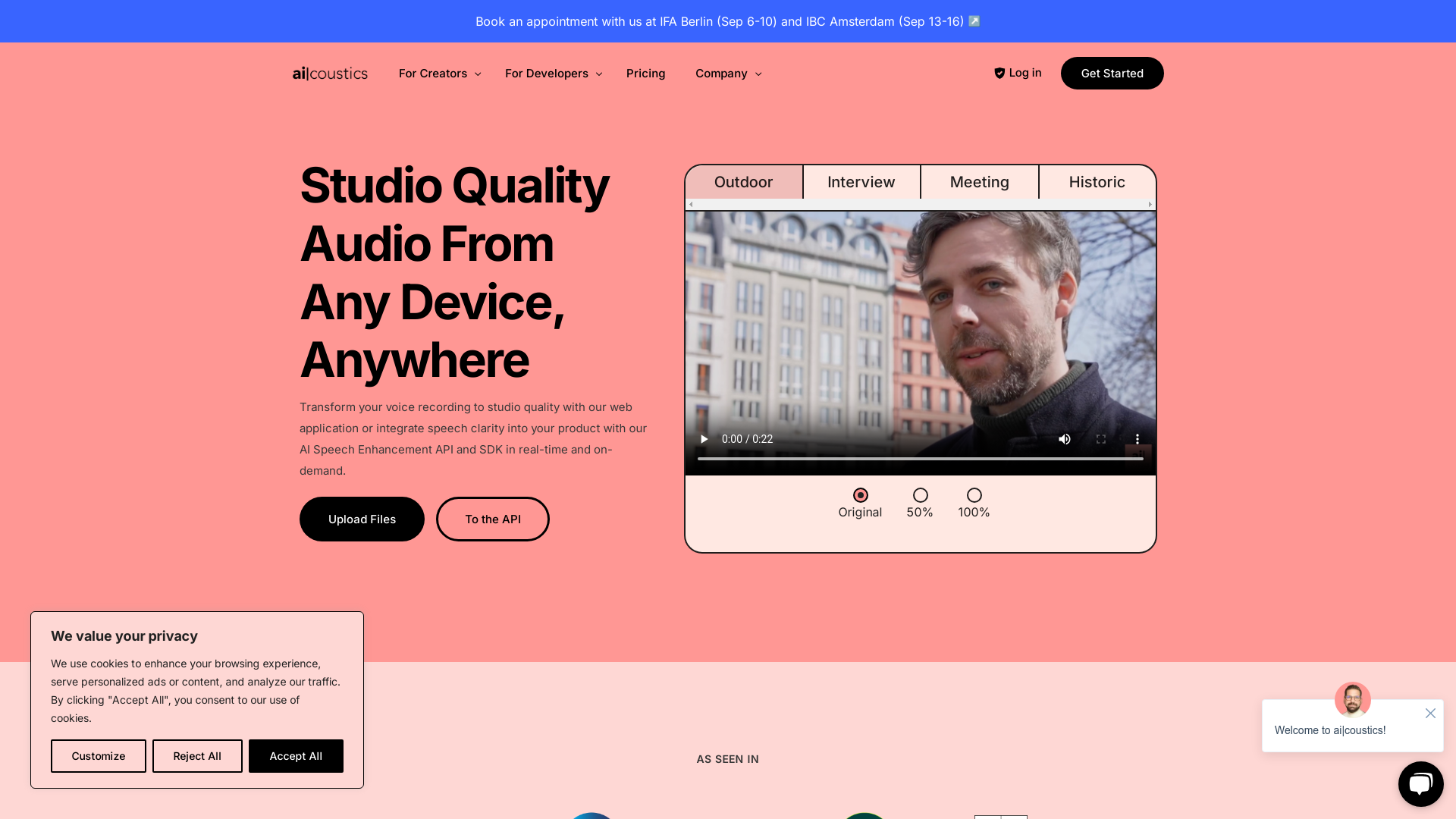Overview
ai|coustics is a cutting-edge, AI-driven platform tailored to significantly enhance voice recordings by boosting speech clarity and eliminating background disturbances. This versatile tool is designed to cater to both individual creators and developers through its dual-component offering: a web app and an API/SDK.
The web app is intuitively designed for ease of use, making it an ideal choice for podcasters, YouTubers, and other content creators who strive for studio-quality sound in their productions. It efficiently removes echoes, distortions, and any ambient noise that can detract from the audio quality, ensuring clear and crisp sound delivery.
On the other hand, the API/SDK component of ai|coustics is engineered for developers looking to embed advanced audio processing capabilities into their applications. This feature supports both real-time and batch processing, making it an invaluable asset in fields such as telecommunications, broadcasting, and digital content creation, where pristine audio is paramount.
ai|coustics supports multiple languages and accents, enhancing its utility for a global user base. It also accommodates a broad array of audio formats, streamlining the audio enhancement process and reducing the need for extensive manual editing. This makes ai|coustics a comprehensive solution for improving audio quality in various applications.
Key features
- Speech clarity enhancement: Utilizes AI algorithms to improve speech intelligibility by reducing background noise and enhancing vocal frequencies.
- Real-time noise removal: Offers tools to instantly remove background noise, echo, and distortions, ensuring clear audio output for real-time applications.
- Multi-language support: Designed to work effectively across various languages and accents, making it suitable for global applications and diverse user bases.
- API and SDK integration: Provides developers with powerful APIs and SDKs for embedding advanced audio processing capabilities into their own applications.
- Wide format compatibility: Supports a broad range of audio formats, facilitating seamless integration and usage in various multimedia projects.
- Efficiency and automation: Automates complex audio editing tasks, saving time and reducing the need for manual intervention in audio processing.
 Pros
Pros
- Adaptive learning capabilities: The tool continuously learns and adapts to new sounds and environments, improving its effectiveness over time.
- User-friendly interface: Designed with simplicity in mind, it allows users of all skill levels to easily navigate and utilize its features.
- Scalable solutions: Capable of handling projects of any size, from small podcasts to large-scale broadcasting, ensuring versatility and scalability.
- Low latency processing: Processes audio with minimal delay, making it ideal for live broadcasts and interactive applications.
- Environmental sound enhancement: Specifically enhances the quality of environmental sounds in recordings, making them more natural and immersive.
 Cons
Cons
- High resource consumption: Requires significant computational power, which may not be suitable for older or less powerful hardware systems.
- Complex user interface: The advanced features and settings can be overwhelming for beginners or non-technical users, requiring a steep learning curve.
- Limited offline functionality: Most powerful features require an internet connection to access cloud-based processing, limiting offline use.
- Dependency on updates: Continuous software updates are necessary to maintain functionality and compatibility, which might disrupt ongoing projects.
- Potential privacy concerns: Handling sensitive audio data through cloud-based services could raise security and privacy issues for users.

















